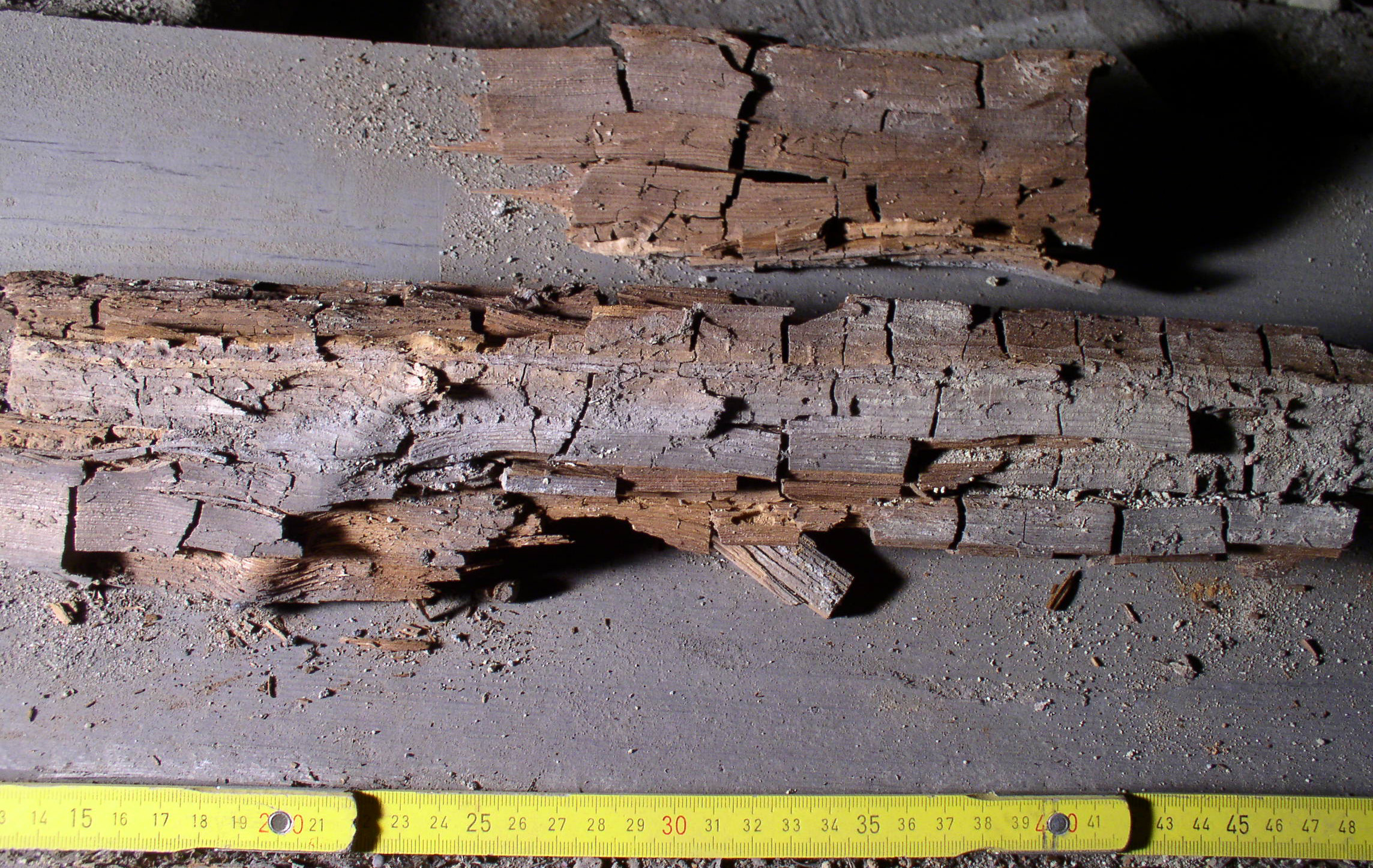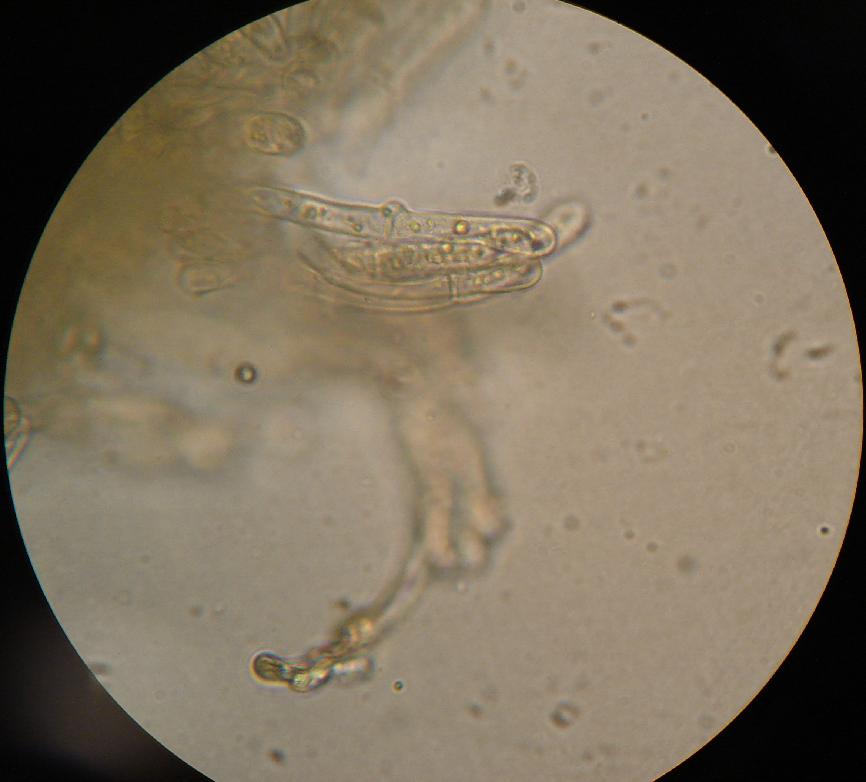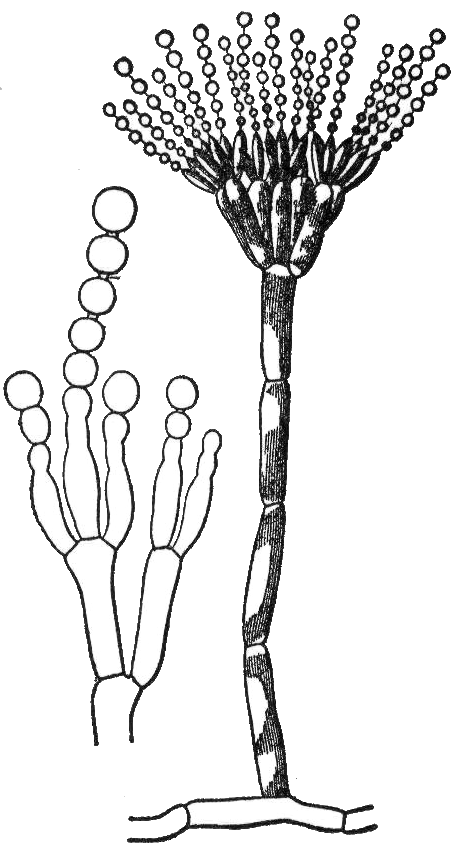|
Gilbertsonia
''Gilbertsonia'' is a fungal genus in the family Fomitopsidaceae. This is a monotypic genus, containing the single brown rot species ''Gilbertsonia angulipora'', found in the United States. ''Gilbertsonia'' is characterized by a dimitic hyphal system with clamped generative and well-developed binding hyphae. The generic name honors mycologist Robert Lee Gilbertson (1925 – 2011). The genus was circumscribed by Erast Parmasto Erast Parmasto (28 October 1928 – 24 April 2012) was a noted Estonian mycologist, bioscientist and botanist and onetime director of the Estonian Institute of Zoology and Botany. Parmasto was born in Nõmme. He became a member of the Estonia ... in Harvard Pap. Bot. Vol.6 on page 179 in 2001. References Fomitopsidaceae Fungi of the United States Monotypic Polyporales genera Taxa described in 2001 {{Polyporales-stub ... [...More Info...] [...Related Items...] OR: [Wikipedia] [Google] [Baidu] |
Robert Lee Gilbertson
Robert Lee Gilbertson (January 15, 1925 – October 26, 2011) was a distinguished American mycologist and educator. He was a faculty member at University of Arizona for 26 years until his retirement from teaching in 1995; he was a Professor Emeritus at U of A until his death on October 26, 2011 in Tucson, Arizona. 2011. He held concurrent positions as Plant Pathologist, Agricultural Experiment Station, University of Arizona (1967–95) for a project '' Research on wood-rotting fungi and other fungi associated with southwestern plants '' and was collaborator and consultant with Center for Forest Mycology Research, US Forest Service, Forest Products Laboratory, Madison, Wisconsin (1957–1981). Early life Early years Gil was born on January 15, 1925, in Hamilton, Montana to George and Eula Norris Gilbertson. He had one sibling, George N. Gilbertson. They grew up in Missoula. Gil shared his youthful adventures with a best friend whose aunt ran a bordello. He also had fond memories ... [...More Info...] [...Related Items...] OR: [Wikipedia] [Google] [Baidu] |
Fomitopsidaceae
The Fomitopsidaceae are a family of fungi in the order Polyporales. Most species are parasitic on woody plants, and tend to cause brown rots. The name comes from ''Fomitopsis'' (meaning "looking like Fomes") + ''-aceae'' (a suffix used to form taxonomic family names). Genera In a proposed family-level classification of the Polyporales based on molecular phylogenetics Molecular phylogenetics () is the branch of phylogeny that analyzes genetic, hereditary molecular differences, predominantly in DNA sequences, to gain information on an organism's evolutionary relationships. From these analyses, it is possible to ..., Alfredo Justo and colleagues accept 14 genera in the Fomitopsidaceae: '' Anthoporia'', ''Antrodia'', ''Buglossoporus'', '' Cartilosoma'', ''Daedalea'', ''Fomitopsis'', ''Fragifomes'', '' Melanoporia'', ''Neolentiporus'', ''Niveoporofomes'', '' Rhodofomes'', ''Rhodofomitopsis'', ''Rubellofomes'', and ''Ungulidaedalea''. References External links * Fomitops ... [...More Info...] [...Related Items...] OR: [Wikipedia] [Google] [Baidu] |
Fungi
A fungus (plural, : fungi or funguses) is any member of the group of Eukaryote, eukaryotic organisms that includes microorganisms such as yeasts and Mold (fungus), molds, as well as the more familiar mushrooms. These organisms are classified as a Kingdom (biology), kingdom, separately from the other eukaryotic kingdoms, which by one traditional classification include Plantae, Animalia, Protozoa, and Chromista. A characteristic that places fungi in a different kingdom from plants, bacteria, and some protists is chitin in their cell walls. Fungi, like animals, are heterotrophs; they acquire their food by absorbing dissolved molecules, typically by secreting digestive enzymes into their environment. Fungi do not photosynthesize. Growth is their means of motility, mobility, except for spores (a few of which are flagellated), which may travel through the air or water. Fungi are the principal decomposers in ecological systems. These and other differences place fungi in a single gro ... [...More Info...] [...Related Items...] OR: [Wikipedia] [Google] [Baidu] |
Wood-decay Fungus
A wood-decay or xylophagous fungus is any species of fungus that digests moist wood, causing it to rot. Some species of wood-decay fungi attack dead wood, such as brown rot, and some, such as '' Armillaria'' (honey fungus), are parasitic and colonize living trees. Excessive moisture above the fibre saturation point in wood is required for fungal colonization and proliferation. In nature, this process causes the breakdown of complex molecules and leads to the return of nutrients to the soil. Wood-decay fungi consume wood in various ways; for example, some attack the carbohydrates in wood and some others decay lignin. The rate of decay of wooden materials in various climates can be estimated by empirical models.Viitanen, T. et al. (2010). Towards modelling of decay risk of wooden materials. European Journal of Wood and Wood Products 68:303-313. Wood-decay fungi can be classified according to the type of decay that they cause. The best-known types are brown rot, soft rot, and wh ... [...More Info...] [...Related Items...] OR: [Wikipedia] [Google] [Baidu] |
Fungi Of The United States
A fungus ( : fungi or funguses) is any member of the group of eukaryotic organisms that includes microorganisms such as yeasts and molds, as well as the more familiar mushrooms. These organisms are classified as a kingdom, separately from the other eukaryotic kingdoms, which by one traditional classification include Plantae, Animalia, Protozoa, and Chromista. A characteristic that places fungi in a different kingdom from plants, bacteria, and some protists is chitin in their cell walls. Fungi, like animals, are heterotrophs; they acquire their food by absorbing dissolved molecules, typically by secreting digestive enzymes into their environment. Fungi do not photosynthesize. Growth is their means of mobility, except for spores (a few of which are flagellated), which may travel through the air or water. Fungi are the principal decomposers in ecological systems. These and other differences place fungi in a single group of related organisms, named the ''Eumycota'' (''true ... [...More Info...] [...Related Items...] OR: [Wikipedia] [Google] [Baidu] |
Circumscription (taxonomy)
In biological taxonomy, circumscription is the content of a taxon, that is, the delimitation of which subordinate taxa are parts of that taxon. If we determine that species X, Y, and Z belong in Genus A, and species T, U, V, and W belong in Genus B, those are our circumscriptions of those two genera. Another systematist might determine that T, U, V, W, X, Y, and Z all belong in genus A. Agreement on circumscriptions is not governed by the Codes of Zoological or Botanical Nomenclature, and must be reached by scientific consensus. A goal of biological taxonomy is to achieve a stable circumscription for every taxon. This goal conflicts, at times, with the goal of achieving a natural classification that reflects the evolutionary history of divergence of groups of organisms. Balancing these two goals is a work in progress, and the circumscriptions of many taxa that had been regarded as stable for decades are in upheaval in the light of rapid developments in molecular phylogene ... [...More Info...] [...Related Items...] OR: [Wikipedia] [Google] [Baidu] |
Clamp Connections
A clamp connection is a hook-like structure formed by growing hyphal cells of certain fungi. It is a characteristic feature of Basidiomycetes fungi. It is created to ensure that each cell, or segment of hypha separated by septa (cross walls), receives a set of differing nuclei, which are obtained through mating of hyphae of differing sexual types. It is used to maintain genetic variation within the hypha much like the mechanisms found in crozier (hook) during sexual reproduction. Formation Clamp connections are formed by the terminal hypha during elongation. Before the clamp connection is formed this terminal segment contains two nuclei. Once the terminal segment is long enough it begins to form the clamp connection. At the same time, each nucleus undergoes mitotic division to produce two daughter nuclei. As the clamp continues to develop it uptakes one of the daughter (green circle) nuclei and separates it from its sister nucleus. While this is occurring the remaining nuclei (or ... [...More Info...] [...Related Items...] OR: [Wikipedia] [Google] [Baidu] |
Hypha
A hypha (; ) is a long, branching, filamentous structure of a fungus, oomycete, or actinobacterium. In most fungi, hyphae are the main mode of vegetative growth, and are collectively called a mycelium. Structure A hypha consists of one or more cells surrounded by a tubular cell wall. In most fungi, hyphae are divided into cells by internal cross-walls called "septa" (singular septum). Septa are usually perforated by pores large enough for ribosomes, mitochondria, and sometimes nuclei to flow between cells. The major structural polymer in fungal cell walls is typically chitin, in contrast to plants and oomycetes that have cellulosic cell walls. Some fungi have aseptate hyphae, meaning their hyphae are not partitioned by septa. Hyphae have an average diameter of 4–6 µm. Growth Hyphae grow at their tips. During tip growth, cell walls are extended by the external assembly and polymerization of cell wall components, and the internal production of new cell membran ... [...More Info...] [...Related Items...] OR: [Wikipedia] [Google] [Baidu] |
Genus
Genus ( plural genera ) is a taxonomic rank used in the biological classification of living and fossil organisms as well as viruses. In the hierarchy of biological classification, genus comes above species and below family. In binomial nomenclature, the genus name forms the first part of the binomial species name for each species within the genus. :E.g. '' Panthera leo'' (lion) and '' Panthera onca'' (jaguar) are two species within the genus ''Panthera''. ''Panthera'' is a genus within the family Felidae. The composition of a genus is determined by taxonomists. The standards for genus classification are not strictly codified, so different authorities often produce different classifications for genera. There are some general practices used, however, including the idea that a newly defined genus should fulfill these three criteria to be descriptively useful: # monophyly – all descendants of an ancestral taxon are grouped together (i.e. phylogenetic analysis should c ... [...More Info...] [...Related Items...] OR: [Wikipedia] [Google] [Baidu] |
Monotypic
In biology, a monotypic taxon is a taxonomic group (taxon) that contains only one immediately subordinate taxon. A monotypic species is one that does not include subspecies or smaller, infraspecific taxa. In the case of genera, the term "unispecific" or "monospecific" is sometimes preferred. In botanical nomenclature, a monotypic genus is a genus in the special case where a genus and a single species are simultaneously described. In contrast, an oligotypic taxon contains more than one but only a very few subordinate taxa. Examples Just as the term ''monotypic'' is used to describe a taxon including only one subdivision, the contained taxon can also be referred to as monotypic within the higher-level taxon, e.g. a genus monotypic within a family. Some examples of monotypic groups are: Plants * In the order Amborellales, there is only one family, Amborellaceae and there is only one genus, '' Amborella'', and in this genus there is only one species, namely ''Amborella trichopoda.' ... [...More Info...] [...Related Items...] OR: [Wikipedia] [Google] [Baidu] |
Basidiomycota
Basidiomycota () is one of two large divisions that, together with the Ascomycota, constitute the subkingdom Dikarya (often referred to as the "higher fungi") within the kingdom Fungi. Members are known as basidiomycetes. More specifically, Basidiomycota includes these groups: mushrooms, puffballs, stinkhorns, bracket fungi, other polypores, jelly fungi, boletes, chanterelles, earth stars, smuts, bunts, rusts, mirror yeasts, and ''Cryptococcus'', the human pathogenic yeast. Basidiomycota are filamentous fungi composed of hyphae (except for basidiomycota-yeast) and reproduce sexually via the formation of specialized club-shaped end cells called basidia that normally bear external meiospores (usually four). These specialized spores are called basidiospores. However, some Basidiomycota are obligate asexual reproducers. Basidiomycota that reproduce asexually (discussed below) can typically be recognized as members of this division by gross similarity to others, by the form ... [...More Info...] [...Related Items...] OR: [Wikipedia] [Google] [Baidu] |
Leif Ryvarden
Leif Randulff Ryvarden (born 9 August 1935) is a Norwegian mycologist. Early life and education Leif Ryvarden was born in Bergen as a son of Einar Norberg Johansen (1900–1959) and Hjørdis Randulff (1912–1975). He finished his secondary education at Berg in 1954 and took basic military education from 1957 to 1958 and in 1956 he changed his last name from Johansen to Ryvarden. He studied chemistry at the Norwegian Institute of Technology. In 1961 he ran for election as chairman of Student Society in Trondheim, albeit unsuccessfully. In 1963, he graduated with the siv.ing. degree , and later majored in botany at the University of Oslo, taking a cand.real. degree. He also studied in London from 1971 to 1972, a stay that sparked his interest in mycology. Academic career Ryvarden conducted field work in about eighty countries, mostly in a tropical environment. From 1965 to 1966, he was employed as research assistant at the Norwegian Institute of Technology, from 1966 to 1972 ... [...More Info...] [...Related Items...] OR: [Wikipedia] [Google] [Baidu] |







